Ringwood Forest
Ringwood Forest
Ring Rd, St Charles, MI 48655
Park Rules
Trail Guide (Printable)
Ringwood Forest is the most ruggedly beautiful of all of our parks. The 160 acres include some of Michigan's oldest forest plantations.
This parks three miles of trails offer picnickers, nature lovers, hikers and cross country skiers towering pine forests, hilly terrain, fishing access and canoe launch on the Bad River.
The parks also houses a pavilion available on a first come first serve basis along with a playground, horseshoe pits, grills and pit toilets. Pavilion is available on a first come, first served basis.
Ringwood is located 2 miles South of St. Charles and 2 miles West of M-52 on Ring Road.
Back to Pavilion Rentals
Vehicle Admission
Free
Boating Opportunities
Canoe launch on the Bad River.
Directions
From the North:
Travel M-52 (South) through the Village of St. Charles. At Ring Rd. Turn (West) right. Follow Ring Rd. for approximately 1.5 miles to the entrance of Ringwood Forest.
From the South:
Travel M-52 (North) to Ring Rd in St. Charles Township which is north of Chesaning. At Ring Rd. turn (West) left. Follow Ring Rd. for approximately 1.5 miles to the entrance of Ringwood Forest.
History
The following inscription is found on a bronze plaque at the main entrance to Ringwood Forest, located on Ring Road, two miles southwest of St. Charles:
"This land, originally part of the great pine forest of Michigan , was lumbered in 1862 by Eleaser J. Ring. Here one of the earliest forest plantations in the state was established in 1883, by his son, William Lee Ring, in whose memory his brother, Clark L. Ring, presented the tract to the University of Michigan in 1930 to be used henceforth for Instruction, demonstration and research in forestry."
After receiving the land in 1930, the University of Michigan began managing the forest resources of the site. Ringwood served the University as an experimental forest management area. The entire site is divided into 24 separate lots, each with different tree species or planting date. University records include separate histories for each of the plots detailing planting dates, thinning, and past cutting dates. Some portions of the original plantings of 1883 still remain. Because of the historical significance of being among the nation's first plantations, it was decided that these areas should be preserved and displayed to the public. In 1983, a 30 year lease was executed between the University of Michigan and the Saginaw County Parks and Recreation Commission and the park officially opened to the public June 1987. Facilities at the 160 acre park include 3.5 miles of trails for hiking and cross-country skiing, educational displays, a canoe launch which accesses the Bad River, and a children's play area. The park includes a picnic pavilion donated by Brant Township in honor of a board member, Ed Federspiel.
